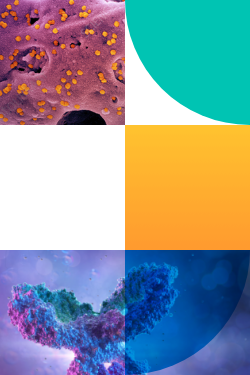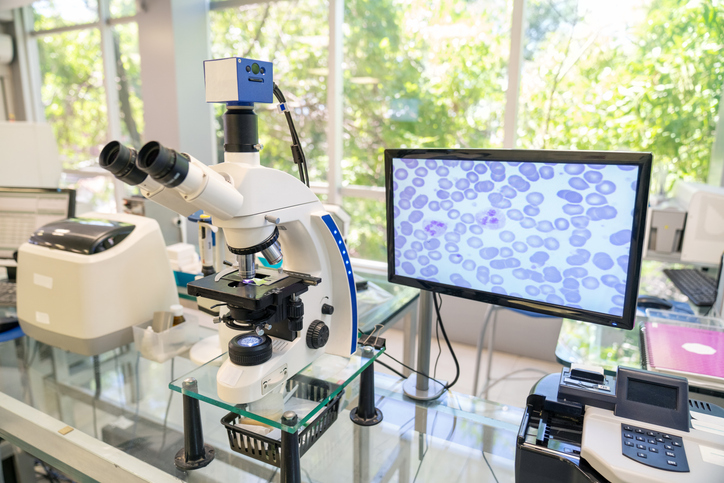Digital pathology has emerged as a critical force in transforming modern healthcare and research landscapes. With rapid technological advancements, it has witnessed a significant evolution and is poised to continue its trajectory, especially with the emergence of the AI era.
Historically, histopathology struggled to keep pace with other healthcare fields until technology caught up. However, recent technological strides in histopathology have led to rapid research and patient care enhancements, allowing professionals to collaborate and share their knowledge and expertise.
The digitization of histopathology has brought about profound improvements in education, particularly for the next generation of experts. With digital technology, aspiring professionals can now gain exposure to rare and unique samples, enriching their learning experiences and preparing them for the challenges of clinical practice.
Moreover, the convergence of histopathology with rapidly evolving AI technology has propelled this field to the forefront of the healthcare revolution. As AI advances, digital pathology stands poised to leverage its capabilities to enhance diagnostic accuracy, optimize treatment strategies, and improve patient outcomes.
Digital pathology represents a dynamic frontier in modern healthcare and research, offering unprecedented opportunities for innovation and collaboration. As technology continues to evolve, the potential for digital pathology to revolutionize patient care and drive advancements in medical science remains boundless.
The Fundamentals of Digital Histopathology
At the core of digital histopathology lies the intricate process of converting physical glass slides into high-resolution digital images, a process facilitated by advanced scanning technology. This transition from analog to digital enables unparalleled accessibility, data management, and analytical capabilities, laying the groundwork for transformative advancements in pathology practice.
By harnessing the power of digital technology, we transcend the confines of conventional microscopy, embracing a dynamic era of innovation and efficiency. The fundamentals of digital histopathology lie in its ability to transform traditional histopathological practices by integrating advanced digital technology. Here is a brief description of some of the critical components that constitute the fundamentals of digital histopathology:
1. Whole Slide Imaging (WSI):
At the core of digital histopathology is whole-slide imaging, which involves converting glass slides containing tissue samples into high-resolution digital images. This process captures the entire tissue section at various magnifications, preserving intricate details for analysis.
2. Digital Slide Management:
Digital histopathology platforms facilitate the secure and accessible management and organisation of digital slides. Pathologists can store, retrieve, and archive digital images efficiently, eliminating the need for physical storage space and reducing the risk of damage or loss. This enables easy access to control and positive samples at the click of a button.
3. Image Analysis Tools:
Digital pathology software often includes sophisticated image analysis tools that enable pathologists to analyze and interpret digital slides more effectively. These tools may assist in quantifying biomarker expression, detecting abnormalities, automating repetitive tasks, and enhancing diagnostic accuracy and efficiency. This has meant a fast turnaround of results, leading to a quick impact on patient lives.
4. Remote Access and Collaboration:
Digital histopathology enables remote access to digital slides, allowing pathologists to review and discuss cases from anywhere with an internet connection. This feature promotes collaboration among pathologists, facilitating consultations, second opinions, and multidisciplinary discussions without geographical constraints. This dramatically impacts the following areas of education and training.
5. Education and Training:
Digital pathology platforms support education and training initiatives by providing access to a vast digital archive of histological images. Trainees can learn and practice interpretation skills using digital slides, which can be annotated, shared, and used for educational purposes. Countries with fewer resources for training the next pathologist can now draw examples and collaborate more efficiently, leading to better outcomes for those who may not have access to normal.
6. Integration with Healthcare and Research Systems:
Digital pathology systems can seamlessly integrate with other healthcare IT systems, such as electronic medical records (EMRs) and laboratory information management systems (LIMS). This integration streamlines workflow processes enhances data management and improves patient care. It also enables increased cross-communication between labs, which can now share images with other departments that may need the equipment or training to perform challenging procedures. Instead, an image can be shared and discussed in real time over a video call.
7. Standardization and Quality Assurance:
Digital histopathology promotes standardization and quality assurance by ensuring consistency in image acquisition, storage, and analysis. This standardization minimizes variability between pathologists and laboratories, producing more reliable and reproducible results. This is critical for those working in the same area of research, but work transcontinental and access to other samples and resources can now be accessed 24/7 and within moments, leading to increased productivity.
How Can Sapio Unlocking the Benefits of Digital Histopathology
Sapio is poised to unlock digital histopathology’s many benefits through a comprehensive approach encompassing various critical components. Our histopathology platform brings new levels of insight and detail to your research. By combining its no-code workflows and science-aware data management with a suite of bespoke capabilities, Sapio LIMS & ELN fits the data challenges of modern histopathology and histology. Sapio is known for our ability to implement robust sample tracking systems, ensuring tissue samples’ traceability and integrity throughout the diagnostic process and enhancing accuracy and accountability. Enhanced planning with automated slide layouts and scalable data management features are critical to transforming how labs work within the digital histopathology revolution.
Additionally, Sapio’s reagent tracking capabilities streamline laboratory operations with our slide composer, optimizing resource utilization and minimizing waste. Tracking protocols ensure procedure consistency and reproducibility, while seamless instrument integration facilitates efficient data management and analysis. Moreover, Sapio’s linkage (via API) to sophisticated image analysis tools empowers pathologists with advanced diagnostic insights and quantification capabilities. By combining results from other research areas, such as proteomics and genomics, Sapio facilitates a holistic understanding of disease mechanisms and pathways. However, perhaps most importantly, Sapio fosters collaboration and the exchange of knowledge among healthcare and research professionals on a global scale, ultimately driving innovation across healthcare and life sciences and enabling enhanced patient care.
Conclusion
In conclusion, we are witnessing how rapid technological advancements have propelled digital pathology to the forefront of innovation, ushering in a new era of diagnostic precision and collaborative expertise. From the digitization of histopathology to the integration of AI technology, the possibilities for enhancing patient care and driving advancements in medical science are limitless.
Advanced digital technology plays a pivotal role in revolutionizing traditional histopathological practices. Whole slide imaging, digital slide management, image analysis tools, remote access and collaboration, education and training, healthcare systems integration, standardization, and quality assurance all contribute to the foundational principles underpinning digital pathology’s transformative potential.
Sapio stands poised to help you unlock the multitude of benefits of digital histopathology with our histopathology platform, which will bring new levels of insight and detail to your research. By combining its no-code workflows and science-aware data management with a suite of bespoke capabilities, Sapio LIMS & ELN fits the data challenges of modern histopathology and histology. This allows for implementing robust sample tracking systems, reagent tracking capabilities, protocol tracking, seamless instrument integration, and linkage to sophisticated image analysis tools; Sapio empowers pathologists with advanced diagnostic insights and fosters collaboration among healthcare & research professionals on a global scale.





